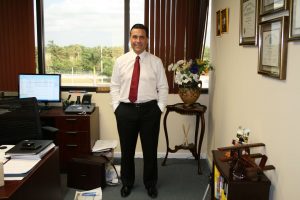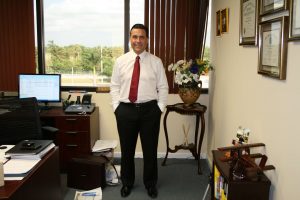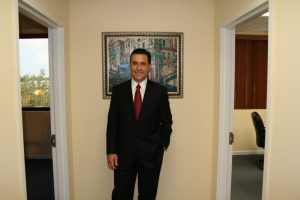Finance 101 For Assisted Living Facilities and Adult Daycare Centers
Finance 101 For ALF or Assisted Living Facilities should focus on two components, cost containment management, and high patient occupancy rates.
Since I became involved in accounting for assisted living facilities and adult daycare centers, I have had the opportunity to learn a lot about financial management. I have had the privilege of helping dozens of clients start, grow, and sell their facility businesses, too.
I’m sure that I learned most of what I know from the mistakes that I made. Tuition is what I call costly mistakes. Lessons that come with a price. Many of my clients have made mistakes, too. I see them every day. But I also get to see great ideas and best practices.
In this post, I want to share with you a list of the biggest mistakes and the corresponding best practices in financial management by small and large assisted living facilities and adult daycare centers providers.
Mistake #1 – Not Understanding the Valuation Equation
Finance 101 For ALF and what is the valuation equation? It is the income approach to the value used by appraisers, lenders, and buyers of assisted living facilities and just about any other piece of income-producing real estate. It is really simple math once you understand it.
Value = Net Operating Income / Capitalization Rate
You can learn more about the valuation equation in another post written a while ago called What’s My Facility Worth.
Here is a very simple explanation of the valuation equation. The Net Operating Income (NOI) is the cash flow your facility generates annually before you pay mortgage payments or any other costs of financing or take non-cash deductions such as depreciation. The Capitalization Rate (the cap rate) is the rate of return your facility would generate without mortgage financing. When you divide the NOI by the cap rate, the result is the value of the property.
Now there is almost always more to it than this simple formula, but this is the foundation of calculating value for income property.
Keep this simple rule of thumb in mind: Multiply your NOI times 10 to calculate the value. Your facility may be better or worse than the average property for lots of reasons but many assisted living facilities are valued at about 10 times the NOI – yours maybe 11 or even 12 times NOI, or maybe just 8 or 9 times NOI. But keep 10 times NOI in your mind for simple and frequent calculations of value to track progress toward your goals.
Finance 101 For ALF Best practice Understand the Valuation Equation.
Mistake #2 –Finance 101 For ALF Not separating Business and Personal Expenses
I have seen it many times. Personal expenses find their way into the business checkbook and onto the income statement and tax return. It happens. For some more than others. Many think that they are saving money by having their business cover personal expenses. Perhaps. But in the long run, what’s the real cost of the business paying personal expenses? A lot.
Let us say that your business spends $1,000 over a year for groceries and supplies that don’t go to your facility but go home. If your total federal and state income rate is 35%, then you may have saved $350 in income taxes by “mistakenly” allowing those personal expenses to be a deduction. $350 – remember that number.
On the other hand, let us say that you are planning to refinance or sell your facility in the next year or two. Using what we just learned about the Valuation Equation, how will that $1,000 in expense affect the value of our facility? Let us do the math. $1,000 times 10 is…..$10,000.
So you saved $350 in taxes and lost $10,000 in value! How expensive were those groceries now??
Finance 101 For Assisted Living Facilities Best practice: Always keep accurate books and report actual income and expenses.
Mistake #3 – Not Outsourcing Accounting and Payroll
Finance 101 For Assisted Living Facilities – You don’t have to do it all.
Many assisted living facilities and adult daycare centers providers are entrepreneurs, starting their own business for the first time. And one of the biggest mistakes that I see many entrepreneurs make (including myself) is thinking that you have to do it all yourself.
But unloading accounting and bookkeeping duties to an accountant you can save you money by making sure things are done right the first time and by freeing you up to do what you do best.
I have a long list of stories about small businesses that got behind in payroll taxes, or didn’t set aside money for income taxes, or had a large number of disallowed expenses on their cost report. Each of these stories ended badly, with pain and suffering that could have been prevented by having an experienced person helping with accounting and payroll.
Best practice: Outsource accounting and payroll
Mistake #4 – Not Maximizing Revenue
What is the second biggest expense in most assisted living facilities and adult day care centers?
Answer: vacancy expense.
Finance 101 For ALF is Payroll and is by far the biggest expense at any facility. But the next largest expense, vacancy, is something that many don’t even consider an expense. It is not uncommon for vacancy rates to run 10% – 20% at many facilities, and that’s a BIG expense.
A full facility hides a lot of expenses. In other words, when the administrators ran a bit over their activity budget or their staffing budget, it was much easier to let it slip a little when they consistently kept their building full and met their goal on the bottom line. If they were running with a 10% vacancy expense, then scrutiny of other expenses was a lot more important.
So one of the financial mistakes that assisted living facilities and adult daycare centers providers to make it not considering vacancy expense and not making marketing, sales, and high occupancy a priority.
Occupancy rates are just part of the revenue formula. A high occupancy rate with residents fees that are too low will also lead to trouble.
Many providers are reluctant to charge what they need to survive. But it is essential that both base rates and charges for levels of care are updated regularly to keep pace with expenses and the market.
Finance 101 For ALF revenue on the books is good but revenue in the bank is better. Make sure that accounts receivable don’t grow too large. An effective collections policy should make sure that money earned is received on time.
Best practice: Minimize vacancy to maximize revenue and raise rates when able to stay in the black.
Mistake #5 – Not Knowing Key Financial Indicators
Managing expenses is important. But some expenses are more important and more controllable than others. Finance 101 For ALF know your Key Financial Indicators (KPI’s)
We just covered the vacancy expense above. That is important.
Some other important, large expenses are fixed over longer periods. Examples include insurance, property taxes, and service contracts. Day to day and month to month management of these expenses isn’t a priority, as long as you try to find ways to trim these items at least every year.
Two other expenses require continuous management: payroll and food expenses.
You need to prioritize your time and manage those expenses that matter the most. Payroll is always the first priority and food is not far behind.
Managing these expenses and all expenses can be done using these key financial indicators:
Finance 101 For ALF control operating expense ratio – the percentage of revenue used to pay all operating expenses. This is a good measure of the overall efficiency of an assisted living facility.
Payroll expense ratio – the percentage of revenue used to pay all payroll expenses. As revenue goes down, payroll may need to go down too. This is a great way to measure how well you’re managing staffing costs.
Food per resident day – the raw food costs to serve each resident for a day. Quality and resident satisfaction are the first priorities but the next priority for kitchen staff should be keeping costs in line.
Key financial indicators should also include other critical items, including:
Occupancy rate – this can be measured very simply as a snapshot of units filled vs units available at the end of the month, or more accurately measured by counting the number of resident days for the month.
Revenue – perhaps THE key financial indicator, it is critical to know if revenue is strong and steady or weak and declining.
Net operating income – when your accounting system is set up properly, this is the easiest number to find and track over time, as well as to gauge positive and negative trends.
Days cash on hand – divide your month-end cash balance by your daily operating expenses for the month and find how much cushion you have for surprises.
There are other measures that providers use, and some of these are more important and more useful than others. Don’t get in a trap of spending too much time calculating key financial indicators. Try to set up a system so that these numbers are generated automatically and tracked monthly.
Providers that have a system to track these key financial indicators monthly will be operating with the information they need to manage their facility.
Finance 101 For Assisted Living.Facilities Best practice: Have a system to generate and monitor key financial indicators monthly
Mistake #6 – Not Having (and Living By) a Budget
This mistake may seem so obvious but it’s so common, too. We have all heard that you need a map to get where you want to go. And the budget is the financial map to help make sure we reach our financial goals.
Some have budgets but miss out on the power and usefulness that budgets provide. Here is how to get the most out of your budget:
Use the budget to do a “what-if” analysis. Test different occupancy rates. Test different staffing schedules. Test different resident fees. Find the impact on your bottom line for your best case, worst case, and most likely cases. Find what is possible, both positive and negative, to protect against setbacks and to set big goals.
Use the budget for comparison to actual. Temporary variation is one thing. But consistently missing the budget is a reason to dig deeper and find whether there is inefficiency or unrealistic expectation.
Budget your key financial indicators, not just revenue and expense. Set a goal for each of your key financial indicators and measure your performance against those goals monthly
Forecast your cash balances as part of the budget. You made a profit – great. But that doesn’t mean much if you run out of cash and can’t make payroll. Forecast cash flow as part of the budgeting process and take into account things like major repairs and replacements, tax payments, insurance deposits, and other non-recurring expenditures.
Best practice: Create a budget and use monthly as a management tool.
Mistake #7 – Not Keeping it Simple
Everything that I’ve said so far may seem a bit complicated. It’s certainly not intended to be.
In fact, one of the keys to effective financial management for most providers is keeping it simple. There are several reasons why this is important and key ways to prevent over-complication.
When financial management becomes complicated, too time-consuming, or too tedious, it eventually is just ignored. Most assisted living providers are wearing many hats. Financial management is just one of the hats they wear and, on many days, probably not the most important one.
When your financial system is simple, it’s easier to delegate many of the simple tasks. Time to pay bills? Pay bills online and show an assistant how to make the payments.
Finance 101 For Assisted Living Facilities is starting with a good system that helps keep it simple. If you’ve never done this before, find someone who has for help and set up your system right from the start. Take advantage of the many tools available today. Online banking and bill pay can speed up the process and bring added levels of security.
Best practice: Implement an effective but simple accounting and financial management system.
Mistake #8 – Not Protecting Your Assets
While it doesn’t happen often, it still does. Someone you trust with your facility’s finances turns out to be not trustworthy. The result could be minor or catastrophic.
Smaller providers have limited options to segregate duties, which is a concept of having multiple staff involved in financial transactions to minimize the risk of embezzlement or other misuses of funds. If you outsource any financial duties to an employee or contractor, have a system of checks and balances to protect your assets.
Best practice: Maintain strong internal controls and proper segregation of duties to protect your assets and reputation.
Mistake #9 – Not Having the Right Financing
Whether your facility is small or large, every facility is expensive. Facilities providers almost always need to borrow a lot of money to buy or build their facilities. So having the right financing is important.
What is the right financing?
Financing that matches your ability to pay. While most lenders or investors won’t give you more than you can afford, some will. Or, your circumstances may change and your ability to pay may change. Consider those possibilities when deciding how much you can afford.
Financing that doesn’t create more risk than necessary. Most financing requires the borrower to personally guarantee the debt. But there are times when that’s not required. Take advantage of opportunities to have non-recourse debt.
Financing that matches your long-term plans. Financing comes in many different terms. Long-term debt can be a blessing, but it can become a curse if your long-term plans change.
Financing the right asset at the right price. Yes, you can borrow enough to buy that facility. But should you? Sometimes owners of assisted living facilities end up underwater because they overbuilt or overpaid for a facility.
Best practice: Secure financing based on conservative assumptions with terms that match your long-term plans.
These are some of the many mistakes that we all make operating assisted living facilities and adult daycare centers. I hope that Finance 101 For ALF the best practices on this list helps give you peace of mind and success in operating your facility.
Welcome to the Gutenberg Editor
The goal of this new editor is to make adding rich content to WordPress simple and enjoyable. This whole post is composed of pieces of content—somewhat similar to LEGO bricks—that you can move around and interact with. Move your cursor around and you’ll notice the different blocks light up with outlines and arrows. Press the
How to Increase Profit Margins Through Virtual CFO Services
How to Increase Profit Margins Through Virtual CFO Services

Great Accounting Firms Share These 10 Traits
Great Accounting Firms Share These 10 Traits which has gone far beyond the paper-pushing days and now involves acting as a virtual CFO

Tax Accountant in Miami Cope with IRS Tax Season Delay
Tax Accountant said IRS delays start of tax season for individual returns would be postponed until February 17 with some as late as March

Miami Accountants Philosophy of Up or Out
Its up or out for Miami Accountants firms are faced with the dilemma of keeping long-term managers that are not ready to be equity partners or let them go.

Contadores en Miami Explican Auditorías del IRS
Contadores en Miami, Gustavo A Viera CPA, explica los pasos de una auditoría, desde la notificación de la auditoría hasta el cierre de la misma
Home » Blog » Accountants in Miami » Finance 101 For Assisted Living Facilities and Adult Daycare Centers

